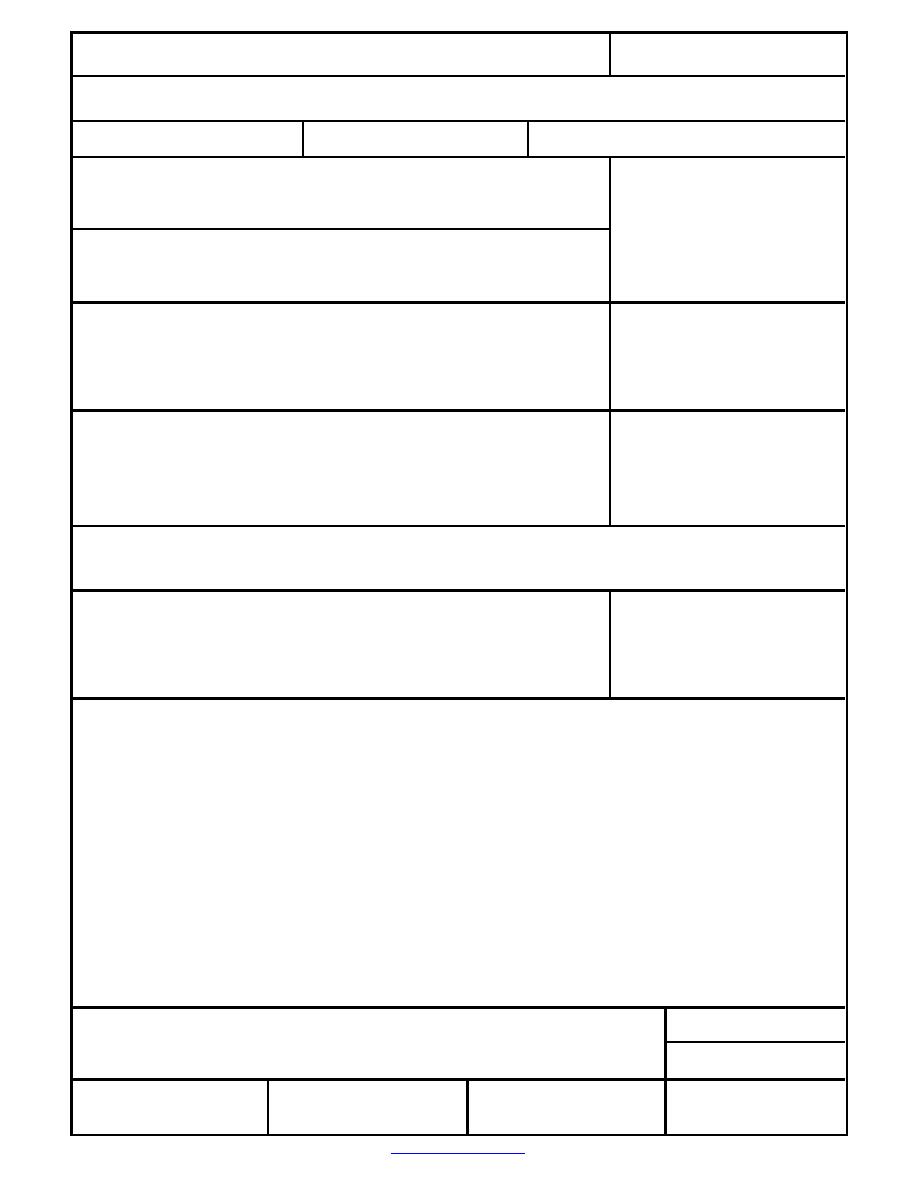
Form Approved
REPORT DOCUMENTATION PAGE
OMB No. 0704-0188
Public reporting burden for this collection of information is estimated to average 1 hour per response, including the time for reviewing instructions, searching existing data sources, gathering and
maintaining the data needed, and completing and reviewing the collection of information. Send comments regarding this burden estimate or any other aspect of this collection of information,
including suggestion for reducing this burden, to Washington Headquarters Services, Directorate for Information Operations and Reports, 1215 Jefferson Davis Highway, Suite 1204, Arlington,
VA 22202-4302, and to the Office of Management and Budget, Paperwork Reduction Project (0704-0188), Washington, DC 20503.
1. AGENCY USE ONLY (Leave blank)
2. REPORT DATE
3. REPORT TYPE AND DATES COVERED
September 1999
4. TITLE AND SUBTITLE
5. FUNDING NUMBERS
An Ecological Land Survey for Fort Wainwright, Alaska
6. AUTHORS
M. Torre Jorgenson, Joanna E. Roth, Martha K. Raynolds, Michael D. Smith,
Will Lentz, Allison L. Zusi-Cobb, and Charles H. Racine
7. PERFORMING ORGANIZATION NAME(S) AND ADDRESS(ES)
8. PERFORMING ORGANIZATION
REPORT NUMBER
ABR, Inc.
U.S. Army Cold Regions Research and
P.O. Box 80410
Engineering Laboratory
CRREL Report 99-9
Fairbanks, Alaska 99709
72 Lyme Road
Hanover, New Hampshire 03755-1290
9. SPONSORING/MONITORING AGENCY NAME(S) AND ADDRESS(ES)
10. SPONSORING/MONITORING
AGENCY REPORT NUMBER
U.S. Army, Alaska
Fort Richardson, Alaska 99505
11. SUPPLEMENTARY NOTES
For conversion of SI units to non-SI units of measurement, consult ASTM Standard E380-93, Standard Practice for Use of the
International System of Units, published by the American Society for Testing and Materials, 100 Barr Harbor Drive., West
Conshohocken, Pennsylvania 19428-2959.
12a. DISTRIBUTION/AVAILABILITY STATEMENT
12b. DISTRIBUTION CODE
Approved for public release; distribution is unlimited.
Available from NTIS, Springfield, Virginia 22161
13. ABSTRACT (Maximum 200 words)
An ecological land survey (ELS) of Fort Wainwright land was conducted to map ecosystems at three spatial scales
to aid in the management of natural resources. In an ELS, an attempt is made to view landscapes not just as
aggregations of separate biological and earth resources, but as ecological systems with functionally related parts
that can provide a consistent conceptual framework for ecological applications. Field surveys at 109 sites along 11
toposequences, and at an additional 131 ground-reference locations, were used to identify relationships among
physiography, geomorphology, hydrology, permafrost, and vegetation. The association among ecosystem compo-
nents also revealed effects of fire and geomorphic processes, such as groundwater discharge, floodplain develop-
ment, permafrost degradation, and paludification. Ecosystems were mapped at three spatial scales. Ecotypes
(1:50,000 scale), delineated areas with homogenous topography, terrain, soil, surface-form, hydrology, and
vegetation. Ecosections (1:100,000 scale) are homogeneous with respect to geomorphic features and water regime
and, thus, have recurring patterns of soils and vegetation. Ecodistricts (1:500,000) are broader areas with similar
geology, geomorphology, and physiography. Development of the spatial database within a geographic informa-
tion system will facilitate numerous management objectives such as wetland protection, integrated-training-area
management, permafrost protection, wildlife management, and recreational area management.
14. SUBJECT TERMS
15. NUMBER OF PAGES
92
Ecosystem mapping
Land survey
Vegetation
16. PRICE CODE
Fort Wainwright, Alaska
17. SECURITY CLASSIFICATION
18. SECURITY CLASSIFICATION
19. SECURITY CLASSIFICATION
20. LIMITATION OF ABSTRACT
OF REPORT
OF THIS PAGE
OF ABSTRACT
UNCLASSIFIED
UNCLASSIFIED
UNCLASSIFIED
UL
Go to contents page
Standard Form 298 (Rev. 2-89)
NSN 7540-01-280-5500
Prescribed by ANSI Std. Z39-18
298-102



 Previous Page
Previous Page
